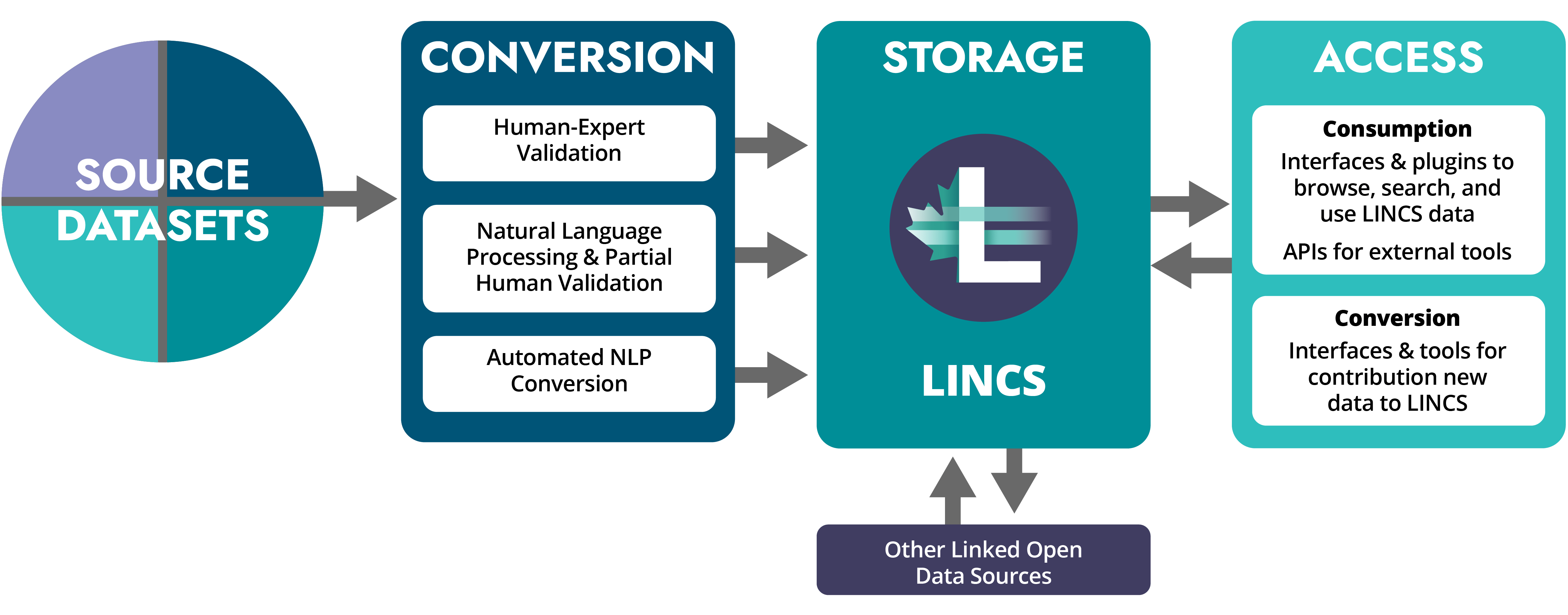Overview
LINCS will leverage existing solutions and expand Compute Canada infrastructure to mobilize large-scale, heterogeneous datasets as Linked Open Data for humanities research.
The source datasets will be converted into Linked Open Data via LINCS’s conversion toolkit, which will mobilize, enrich, and interlink research data. This Linked Open Data will then be stored in LINCS’s national linked data storage infrastructure.
A LINCS-built access system will allow users to filter, query, analyze, visualize, and annotate cultural materials that have been converted into Linked Open Data. Users will be able to modify, evaluate, correct, or reject automated semantic enrichments for their own data and for the data of others. They will also be able to generate and contribute further Linked Open Data through the LINCS conversion tools.
The LINCS system diagram provides a more detailed map of the proposed infrastructure. LINCS will adhere to standards established by Tim Berners-Lee and other architects of the World Wide Web for the Semantic Web, drawing on practical solutions implemented for cultural data.

